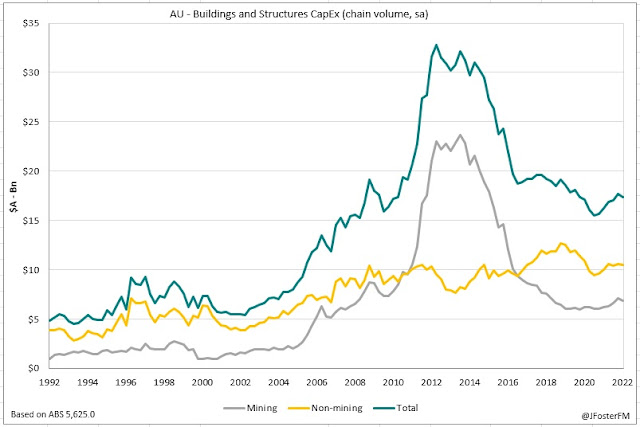The Australian economy expanded by a stronger-than-expected 0.8% in the March quarter (vs 0.7% expected) in a resilient showing amid disruptions from the Omicron wave of the pandemic and severe wet weather and flooding across New South Wales and Queensland. These disruptions led to a 0.9% fall in hours worked in the quarter. Real GDP expanded by 3.3% through the year and is now 4.5% above its pre-Covid level at the end of 2019.
Household consumption advanced by 1.5% in the quarter to drive economic growth. Rising inflation has seen real disposable income being squeezed over the past couple of quarters, contributing to a weakening in consumer sentiment. Despite this, household consumption remains been robust, now 2.5% above its pre-Covid level. Notably, it was discretionary demand (4.3%) that drove consumption growth, defying the fall in sentiment and real incomes. Consumption was funded out of accumulated savings, with the household saving ratio lowered by 2ppts to 11.4%, a still very elevated level.
The other major theme was a rotation from goods (0.3%q/q) to services (2.3%) consumption, which mainly reflects the wider reopening of the economy, with Covid restrictions continuing to ease, notably boosting travel-related spending.
Alongside household consumption, public demand and inventories contributed strongly to growth. Public demand (2.6%q/q) was driven by spending associated with the flood recovery effort. Inventories added 1ppt to GDP in the quarter as retail inventories surged, indicating some easing of supply chain pressures.
Business investment is regaining momentum (1.4%q/q) after its upswing during the initial phase of the recovery was paused by the Delta lockdowns. This was driven by machinery and equipment spending (3.2%), with non-dwelling construction held back by supply issues and wet weather. These headwinds saw activity in the residential construction sector slow further in the quarter (-1%).
Net exports subtracted 1.7ppts from GDP as exports declined (-0.9%q/q), reflecting the hit to production in the resources and rural sectors from the wet weather. Imports accelerated (8.1%q/q) from weakness over the second half of last year. Easing input shortages supported rebounds in vehicle and machinery imports.
Meanwhile, the terms of trade reset to a new record high after rising by 5.9% in the quarter as the war in Ukraine pushed up Australia's export commodity prices. This drove a 3.7%q/q rise in national income. Inflation pressures continued to build: the household consumption deflator broke out by 1.6% in the quarter to 3.2% through the year, its fastest since the previous period of high inflation back in 2008.
Link to the full review here


















































